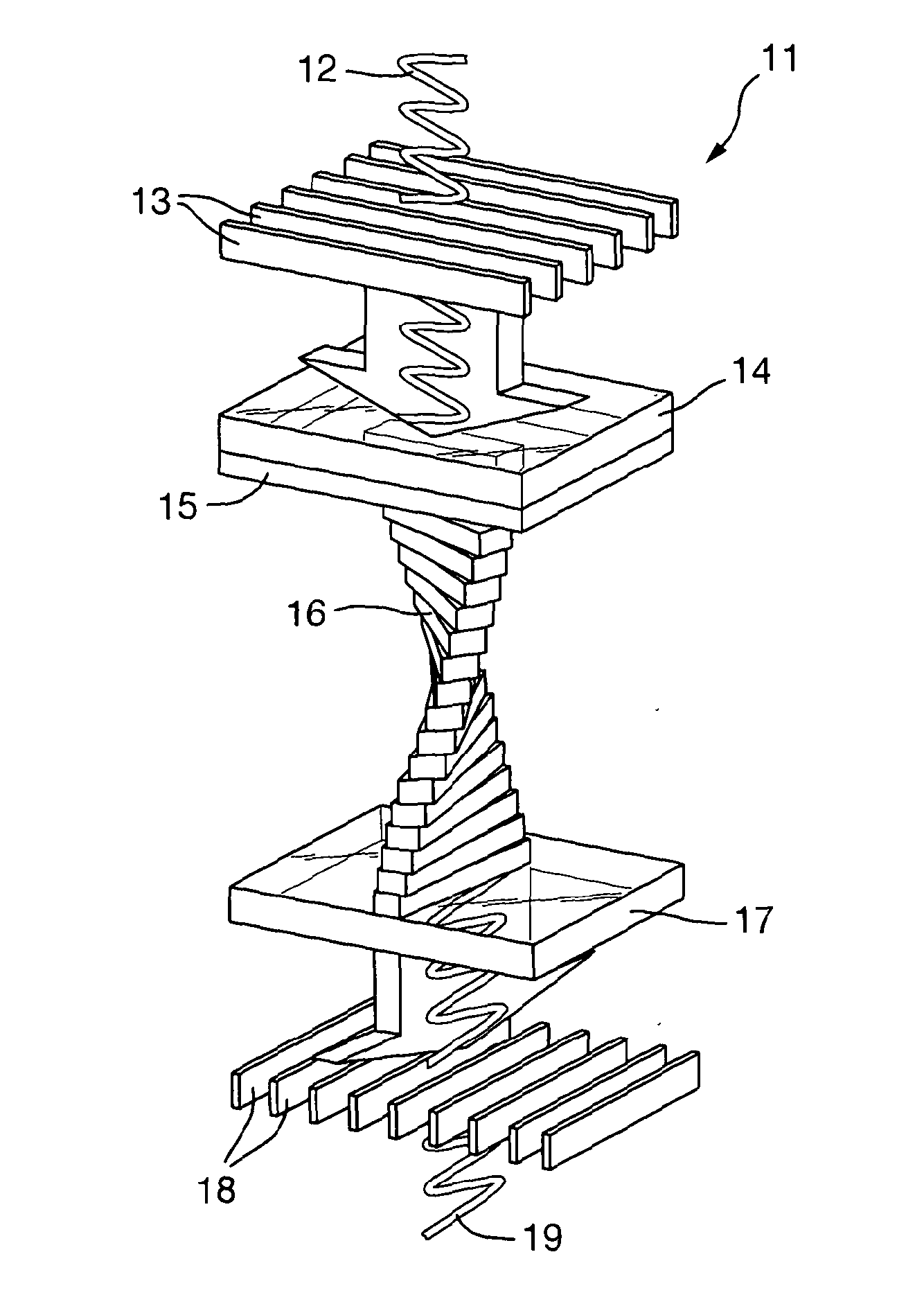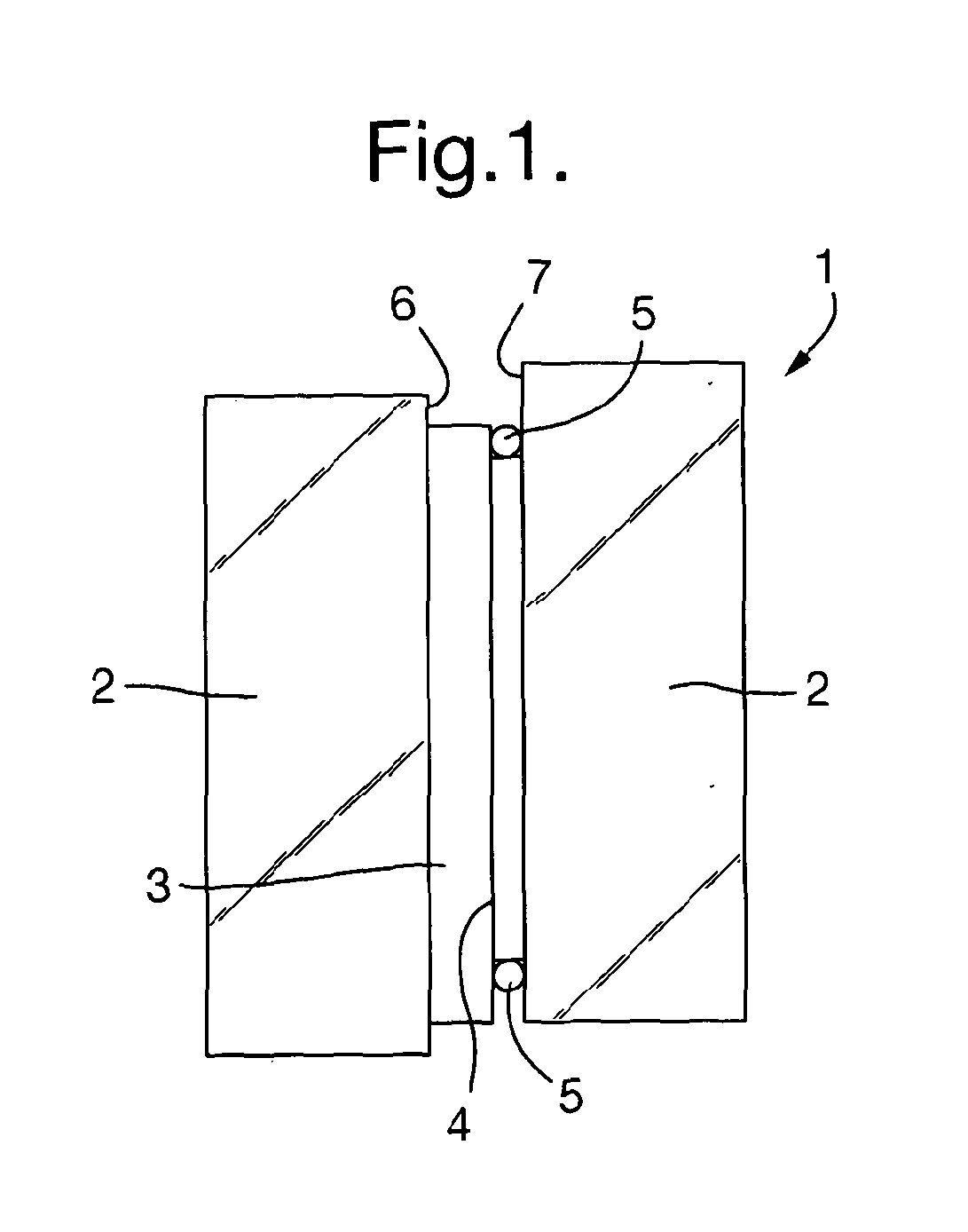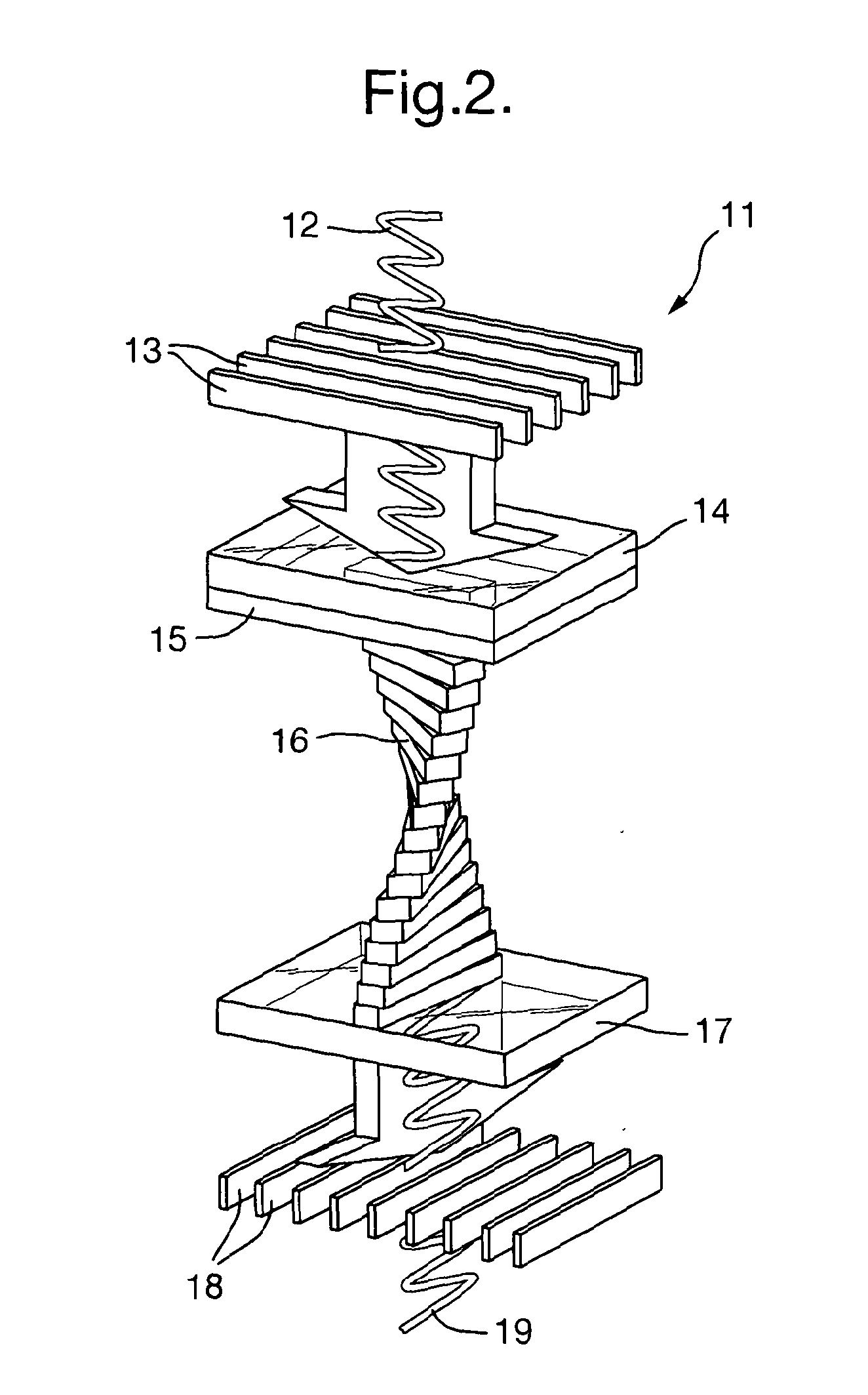Optically addressed light valve
a technology of light valves and light channels, applied in non-linear optics, instruments, optics, etc., can solve problems such as saturation or dazzle especially by lasers, damage to sensors, and degradation of image quality or user situational awareness, and achieve the effect of reducing the number of lasers
- Summary
- Abstract
- Description
- Claims
- Application Information
AI Technical Summary
Benefits of technology
Problems solved by technology
Method used
Image
Examples
Embodiment Construction
[0025]FIG. 1 illustrates a standard OALV design 1. Two glass plates are coated with transparent Indium Tin Oxide (ITO), to provide glass electrodes 2. A photoresistor 3 is coupled to a liquid crystal layer 4, with spacers 5 positioned to form a gap into which the liquid crystal is tilled by capillary action. The glass electrodes 2 are electrically connected to a voltage 6 and to earth 7. These electrical connections 6 and 7 allow a sinusoidal or square wave voltage to be applied across the glass electrodes 2. These glass electrodes 2 are spin coated with a polymer layer and rubbed unidirectionally such that the local liquid crystal layer 4 orientation is determined by the rubbing direction. By constructing the device such that the two rubbing directions are orthogonal, a 90 degree helical structure is set up within the liquid crystal layer 4. This is known as a twisted nematic. Twisted nematic layers are voltage-dependent polarisation modulators.
[0026]FIG. 2 illustrates the effect o...
PUM
 Login to View More
Login to View More Abstract
Description
Claims
Application Information
 Login to View More
Login to View More - R&D
- Intellectual Property
- Life Sciences
- Materials
- Tech Scout
- Unparalleled Data Quality
- Higher Quality Content
- 60% Fewer Hallucinations
Browse by: Latest US Patents, China's latest patents, Technical Efficacy Thesaurus, Application Domain, Technology Topic, Popular Technical Reports.
© 2025 PatSnap. All rights reserved.Legal|Privacy policy|Modern Slavery Act Transparency Statement|Sitemap|About US| Contact US: help@patsnap.com



